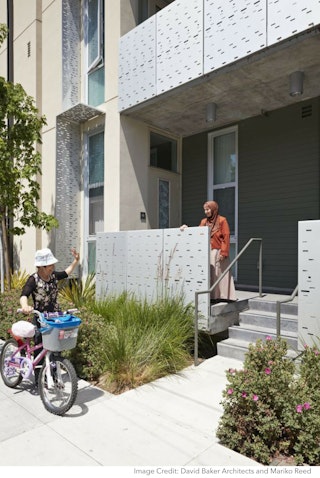Design standards are “objective” if they can be measured, verified, and known by everyone before a project is submitted. When planning reviews use objective design standards, there is no need for personal judgment by public officials.
In contrast, subjective design guidelines often need interpretation and personal judgment. Reviews based on subjective guidelines can take longer and be less predictable.
Example of an objective design standard: "Front setback shall be at least 4 feet."
Example of a subjective design guideline: "Front yard setback should match the character of the neighborhood." This guideline requires judgment about what “character” means.
Objective design standards are expected to make planning approvals more efficient, predictable, and fair, especially for affordable housing projects. To learn more, please read our ODS Zoning Bulletin and review the Project Documents section.


